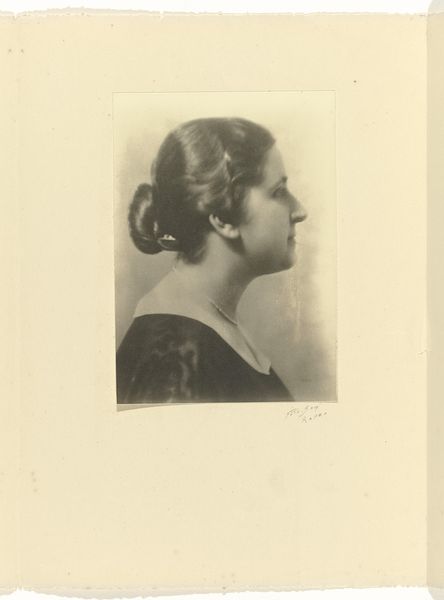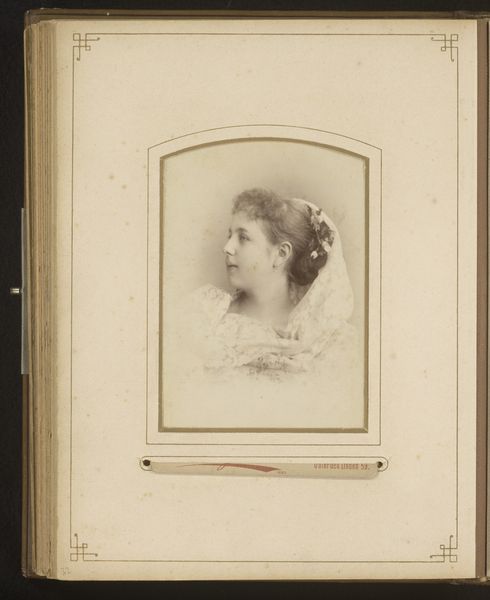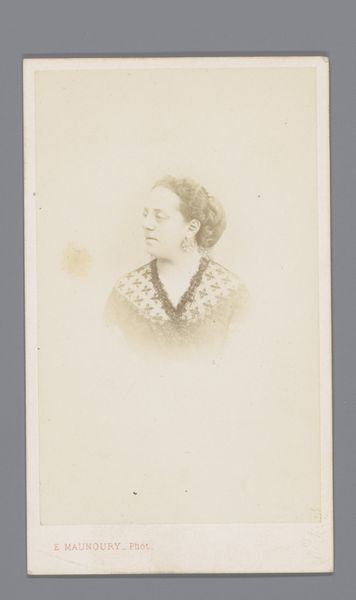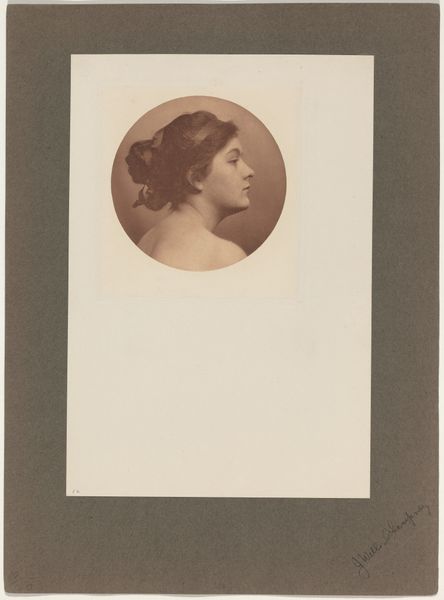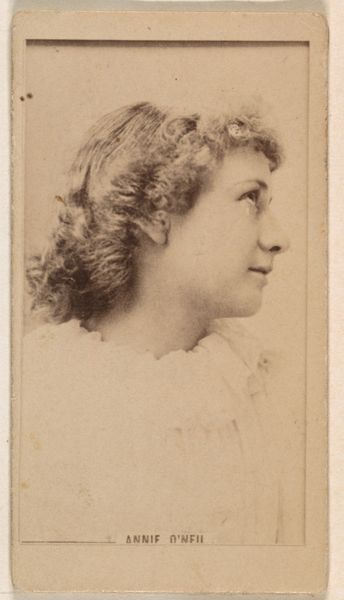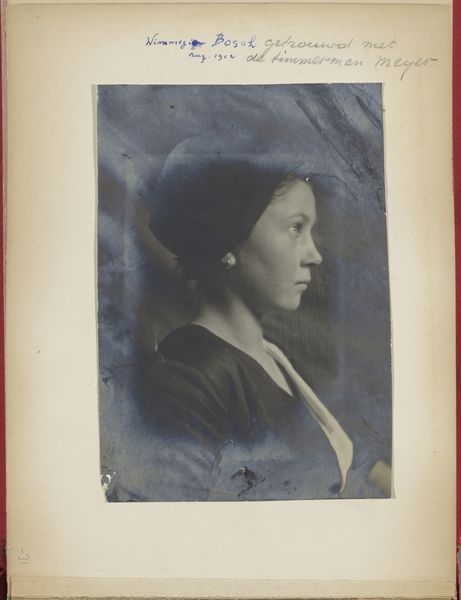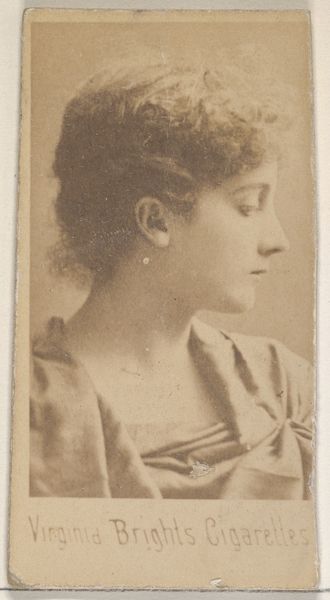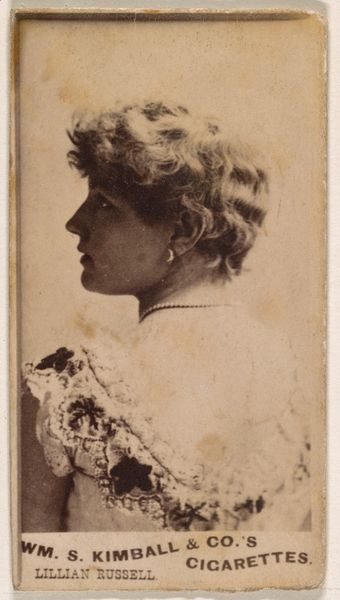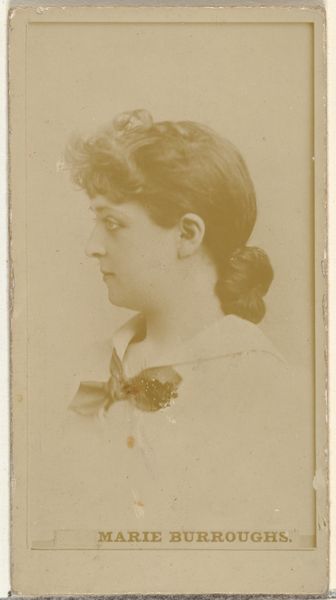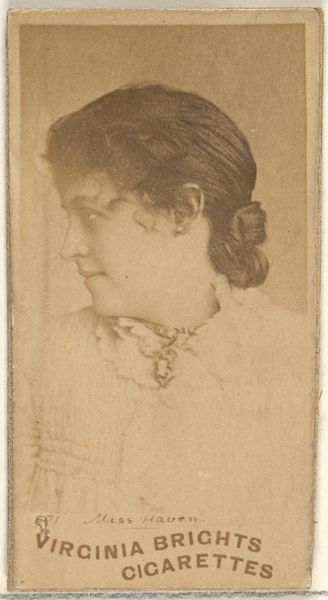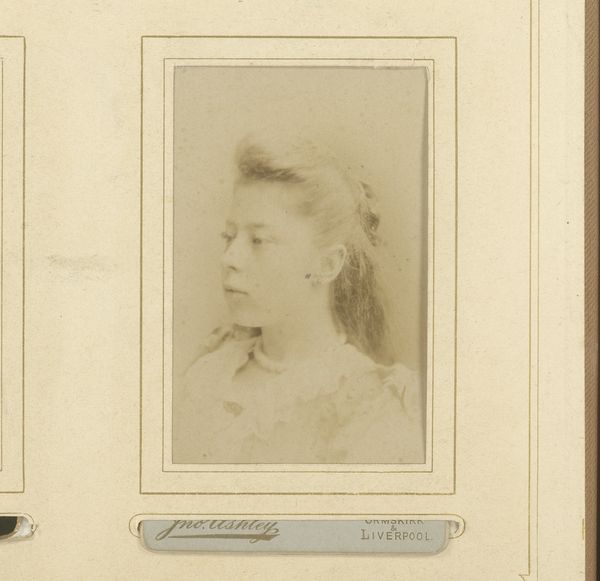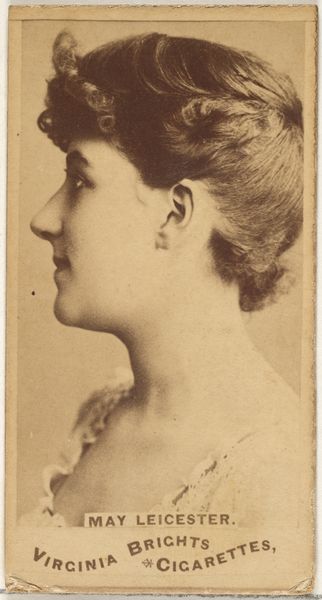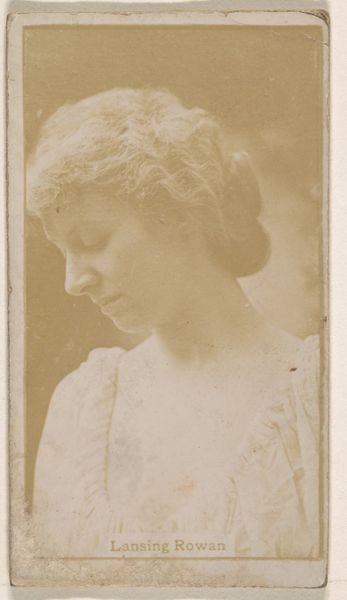
photography
#
portrait
#
art-deco
#
photography
#
coloured pencil
#
watercolor
#
realism
Dimensions: height 140 mm, width 90 mm, height 205 mm, width 160 mm
Copyright: Rijks Museum: Open Domain
Curator: Allow me to introduce Herbert Ruedi's "Portret en profil van Else Wachenheimer-Moos, 1924, Lugano," a photographic portrait capturing a woman in profile. It immediately brings to mind classical portraiture despite being relatively modern in date. Editor: My immediate impression is its delicacy. The sepia tones create an aura of soft melancholy, amplified by the subtle imperfections visible on the print surface itself. It’s evocative, almost dreamlike. Curator: I find it interesting how Ruedi plays with form here. The woman's silhouette is strikingly clear against the muted background. Observe the geometry – the sharp angles of her nose versus the gentle curve of her coiffure; the structural composition seems calculated, yet serene. Editor: Yes, but consider also the material conditions producing such images in 1924. Photography had become somewhat democratized, yet portraits still symbolized status and aspiration. Think of the labour: the photographer, the sitter, the darkroom technicians working to materialize this specific image, embedded in this particular paper. It underscores not just individual likeness but also a complex set of socio-economic exchanges. Curator: True, but within the frame, consider Ruedi's choices; the almost imperceptible soft focus, creating a sense of timelessness. It’s a study in elegant simplicity – no excessive ornamentation to distract from the subject's essence. We get a distilled version of early 20th century portraiture here. Editor: I see it too but I am thinking beyond; portraiture like this served many functions - personal, social and professional, but for many it remains largely undocumented, even anonymous. Portraits can act almost like an artistic excavation, in some sense to consider class, and social aspiration beyond its superficial, beautiful veneer. Curator: So we agree it operates at several levels, then: formally and conceptually, and materially representing the era’s tastes and sensibilities within defined conventions. Editor: Indeed. An interplay of subject and object, artistry and commodity. Curator: Thank you for illuminating the material aspect of its history. Editor: And thank you for elucidating its formal characteristics.
Comments
No comments
Be the first to comment and join the conversation on the ultimate creative platform.
